By Morgan Barker
Steel roofing isn’t just for factories and barns anymore. The choice to go steel is fast gaining popularity on residential homes, especially in climates that see a lot of rain, snow, and ice. With finish warranties of 40+ years and a rainbow of colors to choose from, discounts on some homeowner’s insurance policies, environmentally responsible benefits, cost, and speed/ease of installation, it becomes difficult for many homeowners to choose anything else. And if properly installed, a steel roof can be a beautiful addition to your home while also adding value.
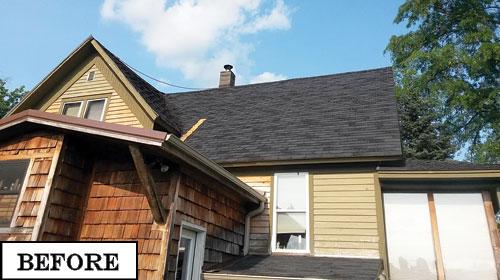
Materials
The first step to getting a steel roof is to get in touch with your local metal roofing suppliers. They will have color samples and will be able to provide you with specifications and dimensions for all the different components such as the basic roofing panel, the hip/ridge cap, rake cap, drip edges, valley flashing, wall flashing, and a few others. It can help if you bring lots of pictures of your roof so the salesman has a good idea of the materials you need. It will also help immensely if you get up on your roof and take detailed measurements. Make a map of your roof with dimensions drawn in. It really helps if you know the width of the panels you will be using. The supplier I like to use makes panels that finish out to 16 inches wide, which makes measuring a breeze, since the 16-inch increment marks are bold or red on many tape measures. When you are up there, take each roof section separately and do not assume that another similar-looking section is the same size. Measure, measure, measure. Your supplier will be able to take these measurements and turn out panels to each length you need. This can save you lots of cutting and money by avoiding waste. Be sure to let them know what the pitch of your roof is so they can put the right amount of bend on the caps, drip edges, and wall flashings. They can usually provide you with paint-matched screws and the proper amount of fasteners and sealants as well as vent boots.
Before your material is delivered, make sure you have a nice level area to store and stage it where it will be safe from damage. Have lots of pallets handy so you can unpack and separate your pieces by length and type. You really only want to move your pieces twice: once to the lay-down area and once over to the cutting table or roof. The more times you handle it, the more chances you have at scratching the finish or denting the metal.
Shuffling through a stack to fish out the right piece is a sure-fire way to mar your investment. Carry your panels by gripping along one edge; they are much stiffer dangling this way and won’t bounce when you walk. Tie each pile securely when you aren’t working to protect them from wind gusts. It only takes a 50 mph wind to lift a Cessna off the ground, and your panels are much lighter than that.
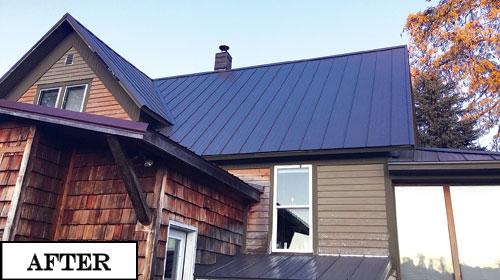
Tools
There are many specialized tools for working with sheet metal and, like many operations, there are many kinds of tools you can choose. The two most commonly-available styles of roofing (standing seam and the ribbed, exposed screw style) need differing primary tools, the former requiring a few more tools. A circular saw fitted with a metal cutting blade — along with some good hearing protection for you — can be your best friend, although maybe not your neighbors’ friend. For the exposed screw paneling, the circular saw is a necessity because the deep profile makes other cutting tools incredibly difficult to use.
Here are some other tools you will find handy:
- offset tin snips (right cutting and left cutting)
- cordless screw gun
- 25-foot tape measure
- chalk line
- straight edge
- 2-foot framing square
- hand metal seamers (a 3-inch-wide jaw is fine)
- hand folding tool that can bend 1 inch (Get one as wide as your panel if doing standing seam, a second folder about 12 inches is very helpful.)
- caulking gun
- pop rivet tool
- pair of sawhorses and a few planks long enough to set your longest pieces on as a work table
There are other tools you can add to the list to suit your working style or to make things on your particular roof go easier. If you have a steep roof, you may need roof brackets and planks to work off of. Proper fall protection is paramount, especially when you get out on that fresh metal.
Good footwear is also a must. There are specialized work boots out there with replaceable gummy soles that make you feel like a tree frog or Spider-Man and are soft enough not to mark up or dent the metal. I prefer a good pair of sneaker-style shoes with natural rubber soles or skate shoes. Try to choose clothing that has no exposed metal snaps or zippers, and secure your tools so they cannot come into contact with the metal. Cut-resistant work gloves are a neat thing to have if you like keeping the red stuff on the inside where it belongs.
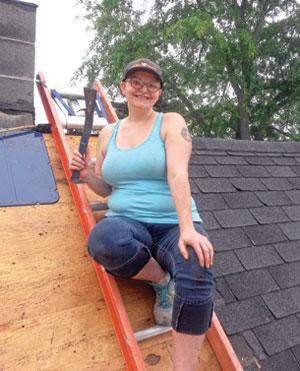
Preparing for installation
I prefer doing a full-shingle tear off and recommend this to anyone else installing a metal roof. The benefits outweigh the extra labor.
Steel, as a roofing material, is unforgiving and will tell the tale of what lies beneath, especially if somebody walks on it later. Even the best shingles are lumpy enough to make pimples in the metal under a careless worker’s boot. If you don’t have a chimney to inspect and clean, this may not be an issue for you, but there are other great reasons for shingle removal. If done right, this will be the last time you will ever see the deck underneath, so now is the time to fix that rotten or sagging area.
You will also be thankful if you have a complex roof with valleys — getting all the extra shingle material out of that area helps smooth out the metal roof installation.
Shingle shovels, pry bars, nail pullers, and determination are all that you need now. Tell yourself, “This is the worst part, but it’s worth it!” Make sure you get everything — all the nails and old staples. If you can’t pull it out, mash it in.
After your deck is smooth and true and all repairs are made, you can lay down your underlayment. Forget you ever even heard the word tar paper; synthetic is what you need for metal panels. It’s really tough stuff and tearing it requires effort. If fastened down properly, it will withstand gale-force winds. Try that with tar paper! This textile-like plastic allows the metal to move as it expands and contracts through the seasons. Follow the manufacturer’s instructions as close as possible. Most will require fastening to the deck with button cap nails or capped staples and all will specify how much overlap you must use based on the pitch of your roof. Many brands come with easy printing on the fabric to help you overlap and get your fastener spacing down. Some brands add textures to help you keep traction up there too. Some manufacturers allow you to leave their underlayment exposed for up to six months, which gives you more time to do your metal panels right without letting the weather pressure you into rushing. Do your homework.
The actual laying of steel can now begin (horns and confetti if you have them).
Installing the metal roof
This is where magazine articles can turn into books, so just remember a few key things.
Water falls down, usually. Think like a raindrop and make sure upper panels overlap over lower panels. Moisture can creep up between panels up to about six inches just through capillary action. This is where locked seams and sealant come into play.
Make sure your first piece is installed nice and square to the ridge. Use the 3-4-5 method (also known as the Pythagorean theorem, where 32+42=52) and your chalk line to snap a plumb line. Do it every so often as you progress, because even a tiny sag can pull your panels off course. You will realize just how fast you can cover a basic roof with large panels and you may be tempted to rock out like a steamroller with a screw gun. Patience, Grasshopper … use that tape measure early and often. Nothing is as deflating as making it to the other end of the roof only to realize that you are drastically out of whack. Being fussy makes the difference between a super classy job and some shabby shanty hack. Measure as many times as you need to; cutting only shortens metal and they haven’t invented a stretching machine yet.
Always carry a little notepad or scratch paper and a pencil. The time you forget it down on the work table is the time you will be measuring the next piece in a valley … the one that requires three separate feet-inch-fractional measurements. And while you are climbing down the ladder chanting them like some monk, the kids start hitting each other and the phone rings … then back up the ladder you go to re-measure. Always have a notebook and pencil.
Touch-up paint fades at a different rate from the factory finish and I don’t trust 30-year-old glue, so don’t make that your parachute plan if you can help it.
Final thoughts
If you are still undecided about the choice of material for your next roof, remember that shingles only last for 30 years at best, and then you will have to pay someone to bury a few tons of asphalt and fiberglass for you. With metal, should you need to rid yourself of it, recyclers pay you. I have often seen used metal roofing for sale on Craigslist, but I have yet to see a big nasty pile of broken shingles for sale. A painter can alter the hue of your metal roof, should your favorite color change. If you collect rainwater, the runoff from a steel roof is much cleaner. Snow usually whizzes right off; there are accessories to actually slow or deflect this feature over walkways and delicate shrubberies. And finally, cost. Good quality, painted metal roofing falls in the middle of the price range between the cheap, three-tabbed, short-life shingles and the pricey architectural shingles with warranties that are still shorter than metal.
Happy roofing, folks!


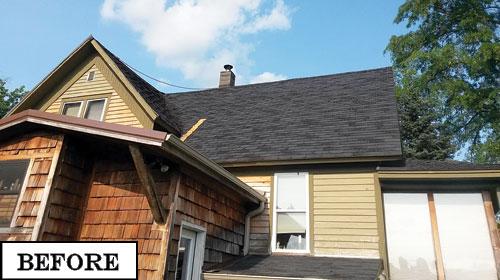







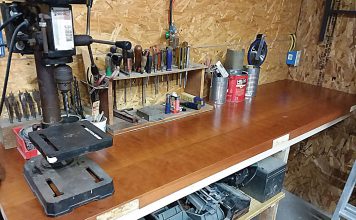




(also known as the Pythagorean theorem, where 32+42=52)? I think the 2 is meant to be a squared sign.